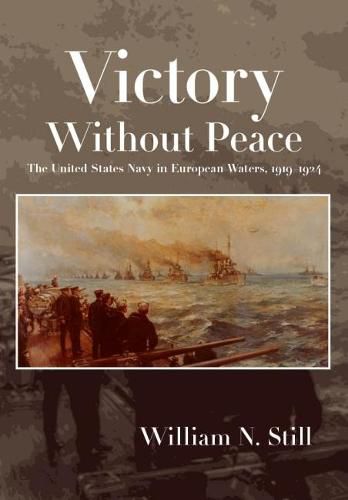Readings Newsletter
Become a Readings Member to make your shopping experience even easier.
Sign in or sign up for free!
You’re not far away from qualifying for FREE standard shipping within Australia
You’ve qualified for FREE standard shipping within Australia
The cart is loading…






Victory Without Peace concentrates on the U.S. Navy in European and NearEastern waters during the post-World War I era. As participants in theVersailles peace negotiations, the Navy was charged with executing the navalterms of the Armistice as well as preserving stability and peace. U.S. warshipswere deploying into the Near East, Baltic, Adriatic, and Northern Europe, whilesimultaneously withdrawing its demobilized forces from European waters. Thissignifies the first time the U.S. Navy contributed to peacetime efforts, setting aprecedent continues today. Conversely, Congressional appropriations handicapped this deployment bydemobilization, general naval policy and postwar personnel, and operatingfunds reductions. Though reluctant to allocate postwar assets into seeminglyunimportant European and Near Eastern waters, the Navy was pressured by theState Department and the American Relief Administration’s leader, HerbertHoover, to deploy necessary forces. Most of these were withdrawn by 1924 andthe European Station assumed the traditional policy of showing the flag.
$9.00 standard shipping within Australia
FREE standard shipping within Australia for orders over $100.00
Express & International shipping calculated at checkout
Victory Without Peace concentrates on the U.S. Navy in European and NearEastern waters during the post-World War I era. As participants in theVersailles peace negotiations, the Navy was charged with executing the navalterms of the Armistice as well as preserving stability and peace. U.S. warshipswere deploying into the Near East, Baltic, Adriatic, and Northern Europe, whilesimultaneously withdrawing its demobilized forces from European waters. Thissignifies the first time the U.S. Navy contributed to peacetime efforts, setting aprecedent continues today. Conversely, Congressional appropriations handicapped this deployment bydemobilization, general naval policy and postwar personnel, and operatingfunds reductions. Though reluctant to allocate postwar assets into seeminglyunimportant European and Near Eastern waters, the Navy was pressured by theState Department and the American Relief Administration’s leader, HerbertHoover, to deploy necessary forces. Most of these were withdrawn by 1924 andthe European Station assumed the traditional policy of showing the flag.